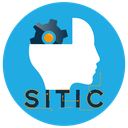Executive Secretary

III International Symposium on “Generation and Transfer of Knowledge for Digital Transformation
SITIC 2025
Abstract
Problem: The implementation of Digital Terrestrial Television (DTT) in Cuba has been marked by a strong dependence on foreign devices with proprietary software, limiting local adaptation and the development of advanced functionalities.
Objective(s): To design a DTT receiver based on Raspberry Pi 4 that improves efficiency and expands available services compared to previous prototypes and commercial STBs.
Methodology: A modular architecture is proposed, integrating general-purpose hardware (Raspberry Pi 4) with open-source software (LibreELEC, KODI, Tvheadend). Theoretical validation tests were defined, including functional, structural, and performance evaluations tailored to the Cuban context.
Results and discussion: The design enables HD/UHD decoding, customizable EPG, content recording, and simultaneous streaming. It overcomes the limitations of the previous Raspberry Pi Zero prototype and commercial STBs, offering greater processing power, advanced connectivity, and energy efficiency.
Conclusions: The proposed receiver represents a significant advancement in Cuba’s technological sovereignty by reducing reliance on closed solutions and enabling the development of interactive services adapted to the national environment.
Resumen
Problemática: La implementación de la Televisión Digital Terrestre (TDT) en Cuba ha estado marcada por una fuerte dependencia de dispositivos extranjeros con software propietario, lo que limita la adaptación local y el desarrollo de funcionalidades avanzadas.
Objetivo(s): Diseñar un receptor de TDT basado en Raspberry Pi 4 que mejore la eficiencia y amplíe los servicios disponibles en comparación con prototipos anteriores y STB comerciales.
Metodología: Se propone una arquitectura modular que integra hardware de propósito general (Raspberry Pi 4) con software libre (LibreELEC, KODI, Tvheadend). Se definieron pruebas teóricas de validación funcional, estructural y de rendimiento, adaptadas al contexto cubano.
Resultados y discusión: El diseño permite decodificación HD/UHD, personalización de EPG, grabación de contenidos y streaming simultáneo. Supera las limitaciones del prototipo anterior (Raspberry Pi Zero) y de los STB comerciales, ofreciendo mayor capacidad de procesamiento, conectividad avanzada y eficiencia energética.
Conclusiones: El receptor propuesto representa un avance significativo en la soberanía tecnológica cubana, al reducir la dependencia de soluciones cerradas y facilitar el desarrollo de servicios interactivos adaptados al entorno nacional.
About The Speaker

Prof. Roberto Vicente Rodríguez

Discussion

 Gold
Gold
 Gold
Gold
 Gold
Gold
 Gold
Gold
 Silver
Silver